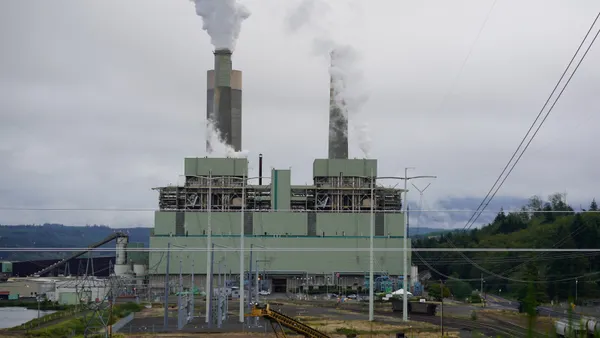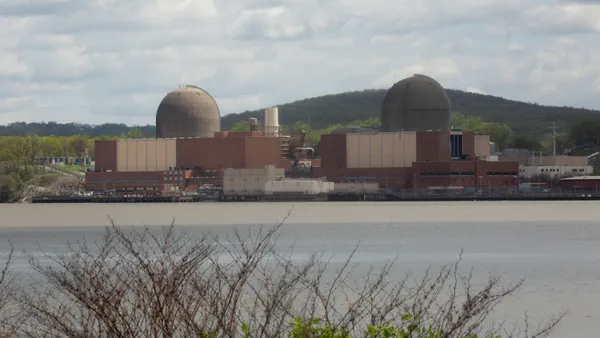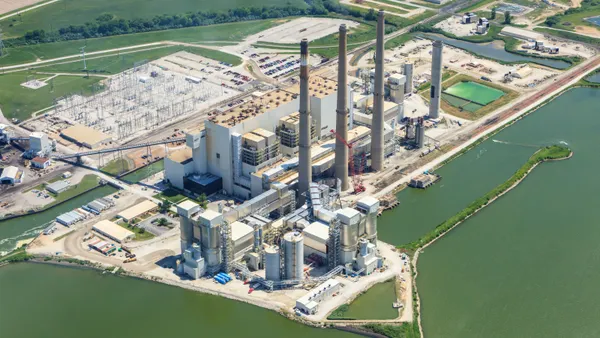Dive Brief:
- Despite setting goals to decarbonize their resource mix, many utility pledges amount to little more than "meaningless greenwashing" because power companies are not moving quickly enough to phase out fossil fuels and add clean energy, according to a new report and data set from Sierra Club.
- The report grades utility decarbonization efforts based on coal plant retirement schedules, plans to add gas-fired capacity, and clean energy investment. Some utilities with carbon-neutral pledges received a failing grade using Sierra Club's methodology.
- The utility sector defended its approach to the decarbonization process. "The goals we have are a reflection of our current understanding of technology and economics," said Emily Fisher, senior vice president of clean energy at Edison Electric Institute.
Dive Insight:
Sierra Club's research examines the long-term plans of 79 utilities owned by the 50 parent companies that remain most invested in fossil fuel generation. Utilities warn that shuttering coal plants too rapidly will send power bills higher.
Sierra Club's methodology assigned points for retiring coal capacity by 2030 and building clean energy resources; points were subtracted based on plans to build new gas plants. The report looks at utilities seeking rate recovery for
their generation assets.
The Sierra Club's aggregate score for all companies studied was 17 out of 100 — but not all of the results were so low. Northern Indiana Public Service Company (NIPSCO) and Public Service Company of Oklahoma (PSCO) scored 82 and 87 points, respectively, for the study's only two 'A' grades.
NIPSCO is targeting a 90% reduction in greeenhouse gas emissions by 2028, relative to a 2005 baseline. Sierra Club's data notes NIPSCO has no plans to add new gas-fired capacity, and has committed to retire all of its coal capacity by 2030. Similarly, PSCO plans to add 6.9 million MWh of clean energy by 2030, according to the data.
NIPSCO parent company NiSource said its coal plants have aged "and gotten more expensive to maintain and operate," leading the company to choose a cleaner resource mix.
"Our decision to begin a transition to a more balanced, sustainable and more diversified generation portfolio is firmly grounded in affordability and reliability for customers," NiSource spokesperson Ken Stammen said in an email. "And renewable technologies have improved immensely, making them more cost-competitive than they've ever been."
Tri-State Generation & Transmission scored 36 out of 100 in Sierra Club's assessment, for a grade of C. The conservation group's data notes that Tri-State plans to retire 56% of its coal generation by 2030.
"The report reflects the progress of our member-driven clean energy transition," Tri-State spokesperson Lee Boughey said in an email. He added that the timing of the report "didn’t allow for the inclusion of 1,850 megawatts of additional renewable energy resources identified in our December 2020 electric resource plan filing."
More than a dozen utility operating companies graded by Sierra Club received scores of 0, including FirstEnergy's Monongahela Power. Sierra Club charges the utility has no plans to retire any of its coal generation by 2030.
A FirstEnergy spokesperson pointed to the company's November pledge to achieve carbon neutrality by 2050. The company says it is also targeting an interim goal, a 30% reduction in greenhouse gases "within the company's direct operational control by 2030, based on 2019 levels."
Duke Energy Corporation received a score of 2 out of 100 and an F rating, with the data pointing out an 11% coal retirement commitment by 2030 and plans to add gas resources. The utility replied that Duke "is a national leader for carbon emissions reduction in the electric sector," and has already reduced emissions 39% since 2005.
"The scenario of building no new natural gas sounds simple, but it’s the most expensive option for our customers and actually requires coal units to operate longer," Duke said in an emailed statement.
Dominion Energy received a score of 27 out of 100 and a D rating, with the data noting a 7% coal retirement commitment by 2030 and plans to add gas resources. Dominion did not respond to a request for comment.
Xcel Energy received a score of 41 out of 100 and a grade of C. The data notes Xcel intends to retire 65% of its coal capacity by 2030.
Xcel, in response, noted in a statement that it was the "first major U.S. power provider to announce its vision to provide 100% carbon-free electricity by 2050," and is also the only utility with an interim goal to reduce carbon emissions 80% by 2030.
Company-wide, Xcel says it plans to retire more than 75% of its coal generation from 2005 to 2030.
"Our projected emission reductions under our carbon vision align with power sector scenarios expected to achieve the temperature targets of the Paris agreement, according to an independent analysis," Xcel said.
Is the 2030 closure date arbitrary?
Sierra Club's analysis and scoring hinges on utility plans to retire coal plants by 2030.
"Our grading rubric is the same thing we've been calling for, for a decade," said John Romankiewicz, senior analyst for Sierra Club's Beyond Coal Campaign and co-author of the report. "Retire coal by 2030 or sooner, don't build new gas to replace it. Utilities earn points by retiring coal and replacing it with renewables. They lose points if they are building new gas."
Sierra Club says the companies it looked at account for 68% of the United States' remaining coal generation — yet those utilities have plans to retire only a quarter of that capacity by 2030. The group says that date is important in order to keep climate change limited to 1.5 degrees Celcius.
As economics force many coal plants out of competitive markets, "what we're seeing is, the remaining coal fleet is less and less merchant and more regulated," said Romankiewicz. "And they're really not budging on their retirement dates."
EEI's Fisher said the Sierra Club analysis is somewhat "arbitrary."
"They can just look at emissions, because they don't have to look at it more holistically," said Fisher. "It feels a little like an arbitrary acceleration" that doesn't consider affordability or technology.
"Affordability of reductions is something we're thinking about a lot this year," Fisher said, referencing the economic impacts of the COVID-19 pandemic.
Fisher also said EEI's utility members are adding more clean energy resources, and new technologies are on the way. In the coming decade, the group sees potential decarbonization progress through advanced nuclear, carbon capture, new transmission and other technologies.
And with President Joe Biden making clean energy a priority, "we're going to see a lot of policy that might have the potential to accelerate our goals," said Fisher.














